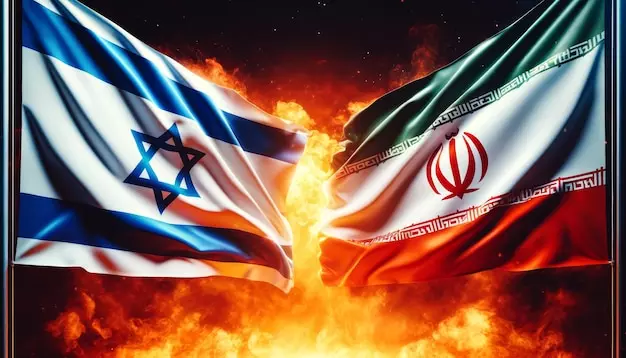- P.O. Box: 11482 Yaoundé, Cameroon; Headquarters: Efoulan, Yaoundé 3
- contact@caessinternational.org

The Natanz region, located about 250 km south of Tehran, was recently targeted by Israeli strikes aimed at one of the key sites of Iran’s nuclear program. Officially, Israel justifies these attacks by its determination to prevent Iran from acquiring nuclear weapons. At the same time, Prime Minister Benjamin Netanyahu’s war against Hamas in Gaza—widely condemned as inhumane for civilians and lacking any political perspective—has triggered a wave of international criticism.
Since the terrorist attack of October 7, 2023, Israel has also intensified its operations against Hezbollah in Lebanon, a militia backed by Tehran. This time, however, the conflict has entered a more direct phase: Israel is now openly at war with Iran—and vice versa. This confrontation, in fact, has been simmering since 1979. That year, the Iranian Revolution overthrew Shah Mohammad Reza Pahlavi, a loyal U.S. ally during the Cold War, and brought to power the ultra-conservative Shiite cleric Ayatollah Ruhollah Khomeini. Among the slogans of the time: “God is great,” “Death to America,” and “Death to Israel.”
Khomeini’s hostility toward Israel was partly fueled by his ties during exile in Iraq with the Muslim Brotherhood, a movement whose anti-Zionism is a core ideological pillar. Upon coming to power, Khomeini established a paramilitary force to rival the regular army: the Islamic Revolutionary Guard Corps (IRGC or Pasdaran). The IRGC quickly organized and armed pro-Iranian militias in Yemen (Houthis), in Iraq, and especially in Lebanon through Hezbollah. By the end of 2023, this militia had around 50,000 fighters, an arsenal of 200,000 rockets, missiles, and drones capable of striking any point on Israeli territory. A portion of this arsenal was stationed in Syria under the protection of Bashar al-Assad’s regime, an ally of Tehran.
However, the Israeli military operations launched after October 7, 2024, have weakened Hezbollah and hastened the fall of the Syrian regime. In other words, for decades, Iran waged an indirect war against Israel through its network of militias. For its part, the Jewish state has long viewed Iran’s nuclear program as an existential threat. As early as the 2000s, suspicions emerged regarding the military dimension of Iran’s program, contradicting Tehran’s commitments under the Nuclear Non-Proliferation Treaty (NPT). The nuclear crisis would dominate international attention for over a decade, culminating in the signing of the Vienna Agreement in July 2015 under the Obama administration. This deal, endorsed by the UN Security Council, called for a lifting of sanctions in exchange for Iran’s reduction of its enriched uranium stockpile. But in 2018, then-president Donald Trump unilaterally withdrew the United States from the agreement. After returning to power in 2025, Trump oscillates between two priorities: re-establishing a deal with Tehran, or preserving Washington’s strategic alliance with Israel.